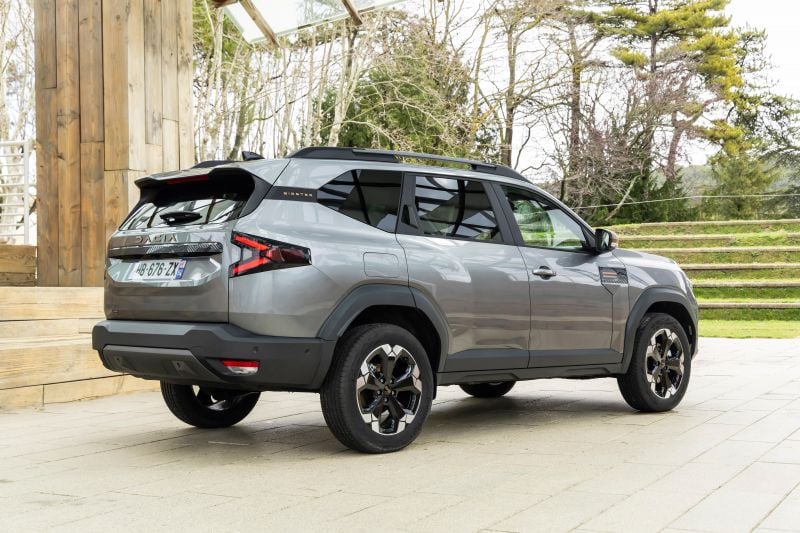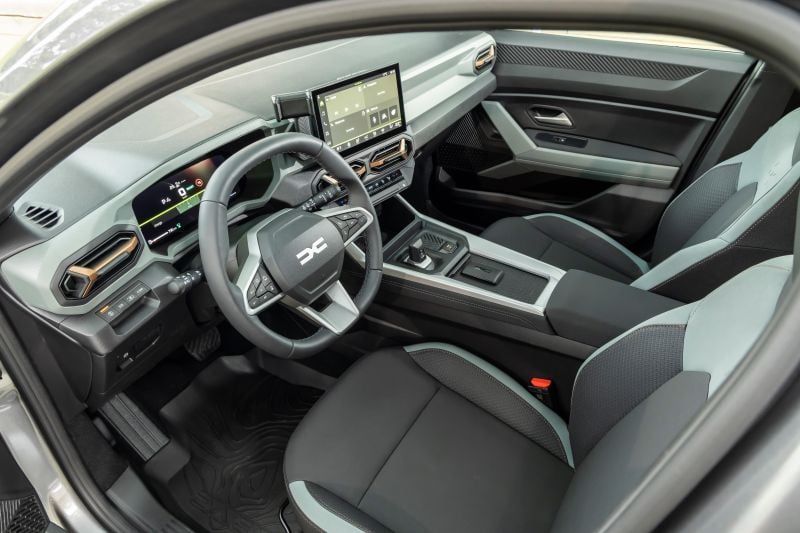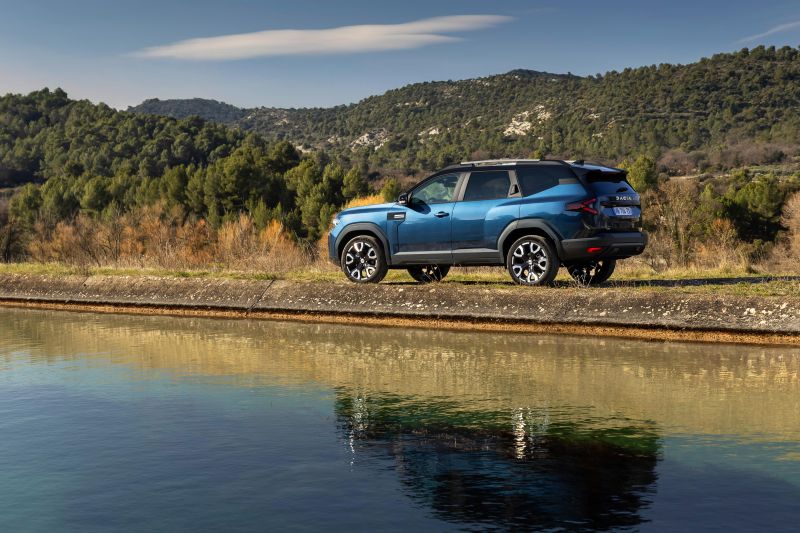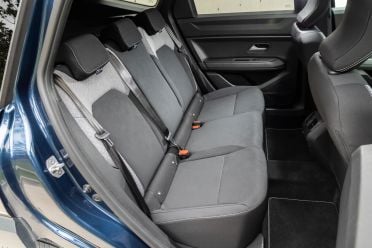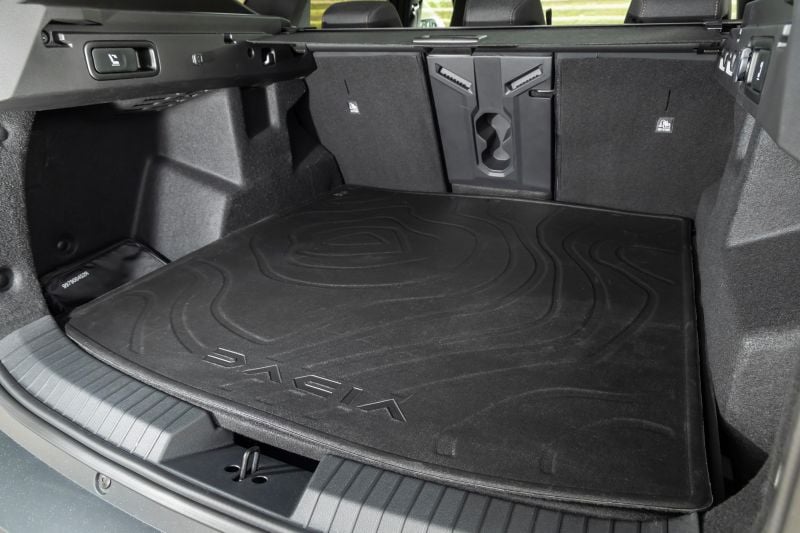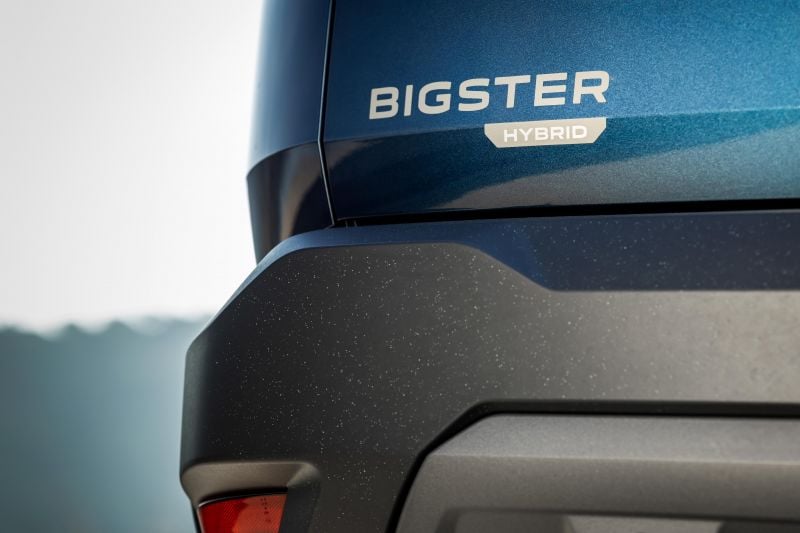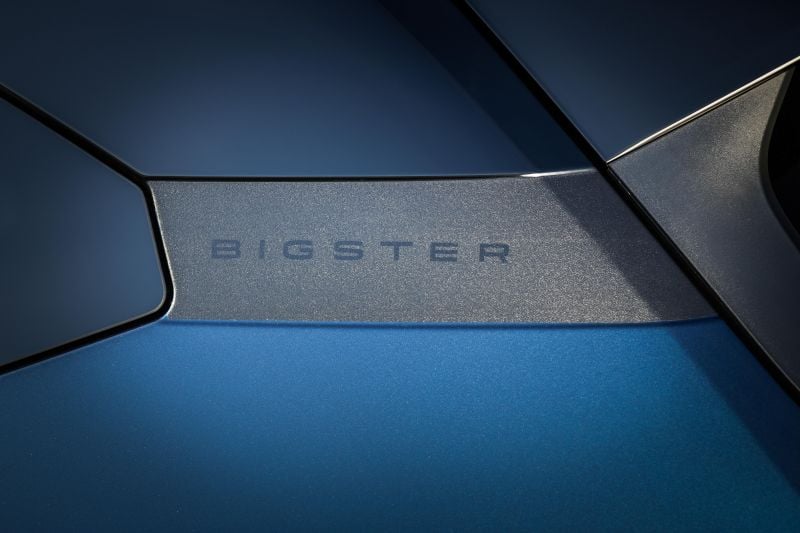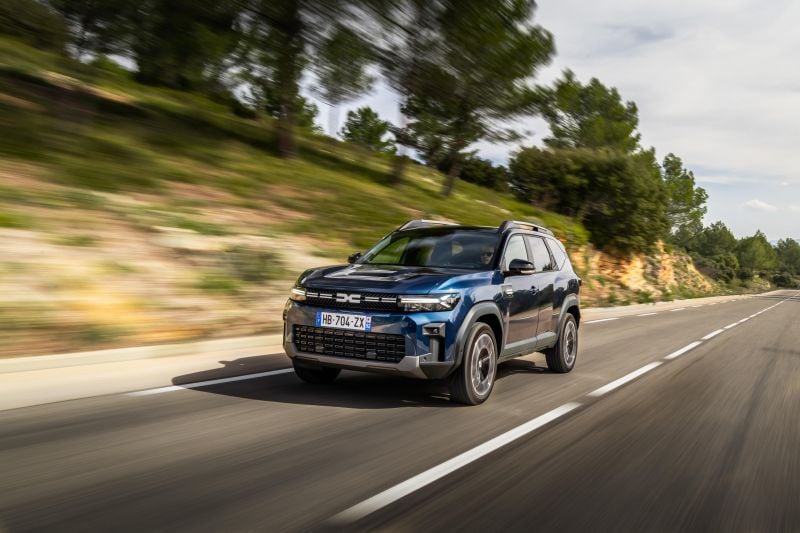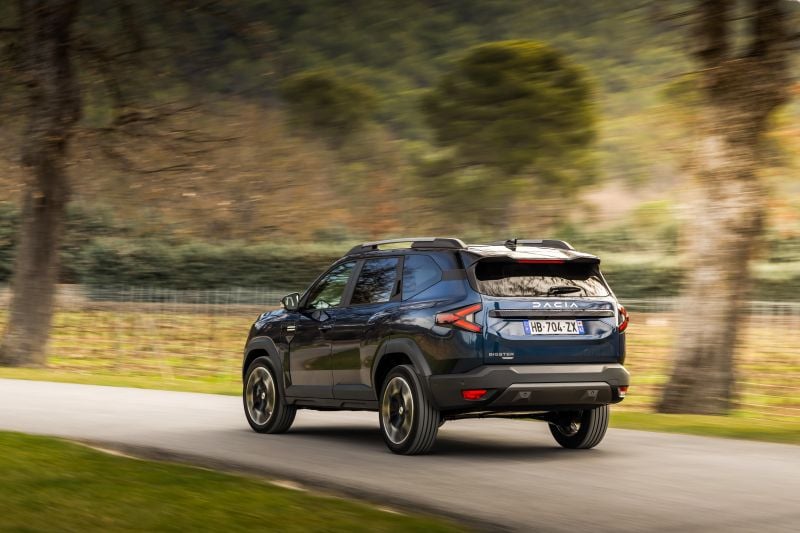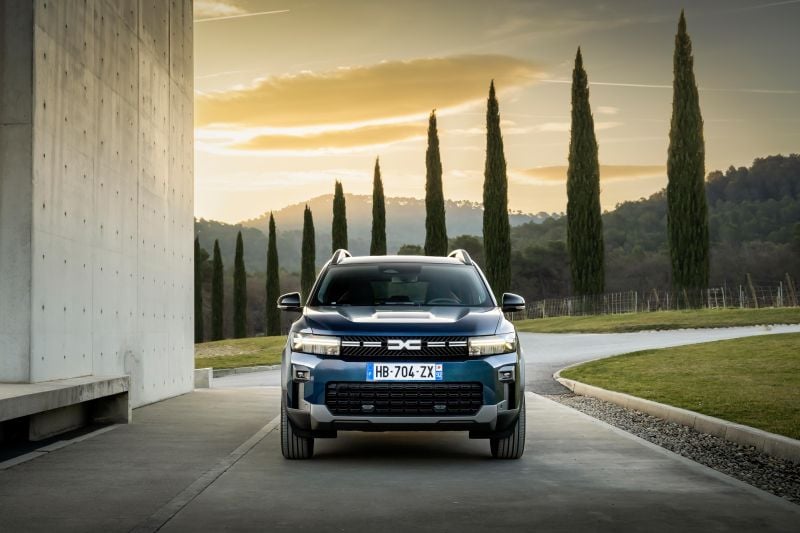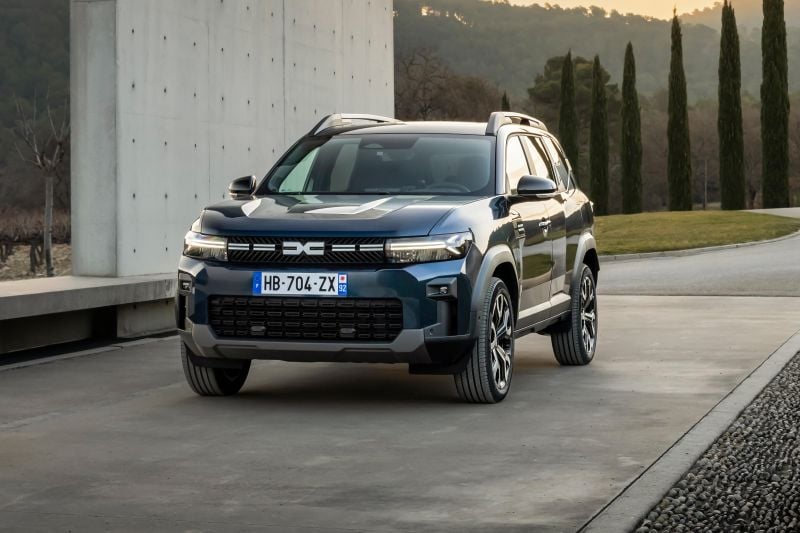You’d assume that the rugged, inexpensive Romanian model can be a pure match for the Australian automobile market, however Ateco Automotive – Renault’s importer and due to this fact the arbiter of what occurs to Dacia in an Australian sense – has lengthy mentioned that if and when it does import any Dacias, they might be offered right here with Renault badges.
And it introduced precisely that simply final month, when it confirmed the Dacia Duster small SUV would arrive in Renault Australia showrooms because the Renault Duster by the tip of this yr.
That is sensible from a model recognition perspective, however not a lot sense in most different methods. Dacia not makes low-cost and cheerful automobiles which are little greater than rebodied Renaults.
Relatively, it makes a variety of automobiles all of its personal design and to its personal functions, and easily makes common raids on the Renault company elements cabinet, nicking mechanical bits for which Renault has lengthy since paid the event prices, sidestepping a number of the extra refined security objects on the identical time, protecting prices beneath management and taking the following poor security rankings from Euro NCAP on the chin.
In Europe, automobile patrons love this recipe, and final yr the Sandero, Dacia’s small hatchback, was the best-selling automobile of all, whereas the compact Duster stormed to the highest of the SUV gross sales charts – at the least so far as non-public patrons have been involved.
Now comes the Dacia Bigster – a tacky title, proper sufficient, however one with a critical function because it lifts Dacia up and away from the extra compact fashions on which it has constructed its success to this point and into a bigger, extra worthwhile slice of the automobile market.
The Bigster does this at a time when Dacia is rigorously massaging its model picture, shifting away from its so-cheap-you-can’t-complain origins and right into a realm the place worth for cash remains to be the model’s primary attraction, however shut behind are issues similar to model and a way of outdoorsy adventurousness.
Dacia desires to be a lower-priced rival for Jeep and Land Rover, and this burgeoning picture, mixed with the Bigster’s area and utility, would make it a really perfect addition to the one greatest gross sales section within the Australian automobile market. You’d assume. Will it ever come right here? We’ll have to attend and see. Within the meantime, let’s see what we’re lacking…
Fashion-wise, the Bigster lifts rather a lot from the smaller Duster, with a chunky, four-square look. There are distinctive touches, such because the Y-shaped LED operating lights constructed into the primary items, the ‘DC’ Dacia badge, referred to as the Dacia Hyperlink, within the grille, and the closely castellated bonnet. There are additionally neat rear gentle clusters that keep away from crossing over into the boot lid – as that may add additional wiring complexity and, due to this fact, extra value.
One other very nice contact is the ‘Starkle’ plastic for the outside. This black plastic, which has little flecks of white and gray within the materials, is product of 20 per cent recycled polypropylene, and the paint is added within the mould so it could’t be scratched. Dacia makes use of Starkle to guard the Bigster’s extremities from knocks and scrapes and together with the dearth of exterior chrome, it provides the Bigster a pleasantly no-nonsense look.
How a lot does the Dacia Bigster value?
Its UK value interprets to an equal of $49,000, which might put the Bigster within the coronary heart of Australia’s booming mid-size SUV section led by the Toyota RAV4, Mitsusbishi Outlander, Kia Sportage, Mazda CX-5 and Hyundai Tucson.
In Europe, Dacia tends to strip extra gear out of its automobiles, chasing most worth, than it places in. However the Bigster bucks that development, with affordable commonplace gear and choices similar to an electrical tailgate, a panoramic glass roof and 19-inch alloy wheels.
What’s the Dacia Bigster like on the within?
Dacias have been as soon as noticeably constructed right down to a value, however the model has critically upped its sport in high quality and materials phrases, although the Bigster’s cabin wears its still-cheap plastics with satisfaction.
To be honest, the supplies used are nearer to sturdy than low-cost, and as a substitute of acres of plain, scratchy plastic, Dacia has moulded in textures and colors that raise the feel and appear of the dashboard and door tops.
Equally, objects such because the steering wheel and the stubby, rubberised toggle swap that selects the automated gears have been rigorously labored on to guarantee that they’re pleasingly tactile (the guide gear shifter much less so).
The entrance seats and driving place additionally mark a considerable enchancment over Dacia’s smaller Duster SUV, which shares the identical CMF-B platform because the Bigster. The driving place feels decrease and extra pure, and there’s extra space on your legs and toes.
Plus, the entrance seats – lined in both a nice tweedy materials, or a wipe-down overlaying that feels virtually wetsuit-like – are very comfy and supportive. We spent a number of hours behind the Bigster’s wheel for this check, with nary a twinge nor grievance from again nor legs.
There’s a alternative of centre console layouts, relying on the mannequin, and our top-spec hybrid-engined Journey check automobile got here with the tallest of those, that includes a usefully deep storage space beneath the armrest, two giant cupholders and extra space in entrance of the gear selector which is house to a wi-fi cellphone charging pad.
The Bigster’s 10.1-inch infotainment touchscreen sticks to the model’s easy and inexpensive shtick by being virtually mono-coloured (it’s largely inexperienced, black, or yellow) and straightforward sufficient to make use of. It helps that Dacia has borrowed a set of bodily buttons for the air-conditioning system from the Renault Austral, which work properly and really feel like high quality objects.
The motive force’s digital instrument cluster – measuring both 7.0-inch or 10.0-inch relying on the mannequin – is once more easy, virtually monochrome and straightforward to make use of. There are bodily buttons on the steering wheel for the cruise management and for altering the show on the instrument panel, whereas there’s a separate stalk behind the wheel for audio controls – once more, lifted from a number of latest Renaults.
The Bigster’s huge benefit, as befits its title, is area. Dacia claims that there’s 240mm of legroom within the again and taller rear passengers ought to have little problem in getting comfy.
The massive facet home windows offer you an honest view out, and the optionally available glass roof is good too, letting in plenty of additional gentle. The rear seat armrest doubles because the load-through for the boot and consists of cupholders and cell phone holders.
Dacia additionally consists of ‘YouClip’ mounts – little clip-on factors of its personal design for additional equipment, similar to extra cupholders or perhaps a clip-on torch. There’s additionally a design competitors in the intervening time to create intelligent new equipment, together with a mixed canine water bowl, leash hook, and poop-bag holder. In idea, you may even 3D-print your personal YouClip equipment, as Dacia has made the design for the system open-source.
There are three YouClip mounts within the cabin, and two extra within the boot, which is huge. Go for the essential front-wheel drive model and there’s 702 litres of bags room as much as the retracting load cowl, and 2002 litres if you happen to fold the three-way-split again seats down (there are useful levers in the back of the boot to assist with this).
Our hybrid check automobile loses a few of that area to its battery however nonetheless has 612 litres of cargo capability beneath the baggage cowl, which is huge sufficient for many. The boot flooring is reversible – carpeted on one facet, wipe-clean plastic on the opposite.
You may quibble that there’s no seven-seat choice, and given how large the boot is, that’s a justifiable gripe. Dacia rationalises the choice to go away the Bigster as a five-seater in various methods, however the primary purpose is just value.
To engineer the Bigster for seven seats would have meant a unique rear construction, new rear suspension and difficulties packaging the hybrid battery. All of which might have pushed up the value, and that’s simply not the Dacia manner. And in Europe Dacia gives the Jogger seven-seater.
What’s beneath the bonnet?
The Bigster is perhaps huge, however none of its engines are. Probably the most fundamental variant comes with a turbocharged 1.2-litre three-cylinder petrol engine with mild-hybrid help, producing simply 103kW.
For some markets, there’s additionally a 96kW model of this engine which might run on LPG as properly, and has a spherical LPG tank sitting within the spare wheel properly beneath the boot flooring. The only all-wheel drive Bigster, for now, makes use of that engine too, and all of these variations come solely with a six-speed guide gearbox.
Nevertheless, the best-seller in Europe is more likely to be the Hybrid 155 model, which employs a 1.8-litre petrol engine backed up by a 37kW electrical motor and a compact 1.2kWh lithium-ion battery, producing a complete of 115kW. It additionally makes use of a fancy four-speed automated gearbox, into which the electrical motor and a hefty starter-generator are put in.
These are the one engine choices for the second, however subsequent yr the Bigster will develop into the primary Dacia mannequin to get a brand new electrical rear-axle drive system, permitting it to supply all-wheel drive mixed with hybrid energy and an automated gearbox.
Dacia doesn’t quote a mixed system torque output, however the engine manages 172Nm and the electrical motor 205Nm, so it’s not doing too unhealthy, and even on this heaviest hybrid kind, the Bigster solely weighs 1487kg.
Because of that, gasoline financial system is spectacular. Dacia quotes an official quantity, on the WLTP check, of 4.6L/100km, and we managed 5.3L/100km on our drive. In equity, that was on French roads, which have usually fairly low pace limits, however we did drive over an excellent mixture of freeway, metropolis, city, nation and twisty mountain roads.
CO2 emissions are additionally impressively low, matching and even beating one of the best that the Toyota RAV4 can handle. It’s price noting that whereas the mild-hybrid Bigster can tow as much as 1500kg with a braked trailer, on this Hybrid 155 model that falls to 1000kg.
| Specs | Dacia Bigster Hybrid 115 |
|---|---|
| Engine | 1.8L 4cyl hybrid |
| Energy | 115kW |
| Torque | 172Nm (petrol engine) 205Nm (electrical motor) |
| Transmission | 4-speed automated |
| Drive sort | FWD |
| Weight (kerb) | 1487kg |
| Gasoline financial system (claimed) | 4.6L/100km |
| Gasoline tank capability | 50L |
| Gasoline requirement | 95-98 octane premium unleaded petrol |
| CO2 emissions | 104g/km |
| Emissions commonplace | Euro 6e |
How does the Dacia Bigster drive?
The Bigster is barely a bit of taller than it’s large, and that squareness appears to make its manner via to the driving expertise.
It feels blocky and strong on the street, not in an unenthusiastic sense, however in a gentle, safe-pair-of-hands sense. It drives like an excellent opening batter bats.
The Bigster’s steering is gentle and doesn’t talk a lot, so don’t go anticipating the S in SUV to be paid off. Equally, the comfortable suspension – often caught out by sharp edges and sending a giant ‘thwack’ up via the cabin – implies that the large, sq. nostril bobs a couple of bit and wishes a second’s breath to settle earlier than you swing it into a quick nook.
Whereas none of that sounds nice, the very fact is that the Bigster drives with a type of laid-back confidence. No, you’ll by no means chuck it round for enjoyable, however equally it rolls alongside pleasantly with sufficient responsiveness to the steering to make sure that you don’t get too bored.
It’s a household automobile and arrange for easy-going cruising greater than the rest, and at that it does very properly.
The limitation is refinement. Dacia has added extra acoustic insulation than it often does, and there’s even thicker-than-usual facet glass to try to hold the noise down, however at freeway speeds you’ll positively discover some wind roar and tyre drone. It’s not too unhealthy although, and lengthy runs within the Bigster nonetheless develop into fairly stress-free.
Of extra curiosity to most drivers than its cornering prowess are good visibility, and it helps that you may see the perimeters of the bonnet from the motive force’s seat.
Whereas the Bigster is huge, by Dacia requirements, at slightly below 4.6 metres lengthy and 1.81 metres large, it’s removed from the biggest SUV round, and it by no means felt overly cumbersome even on the slender streets of French villages.
What do you get?
On condition that the Dacia Bigster isn’t confirmed for Australia, we don’t understand it’ll get. In Europe it will get the next as a base.
2025 Dacia Bigster highlights:
- 10.1-inch infotainment touchscreen
- Smartphone mirroring
- LED headlights and tail-lights
- 17-inch alloy wheels
- Digital instrument cluster
- 4 electrical home windows
- Handbook air-conditioning
Is the Dacia Bigster protected?
There was one thing of a operating battle between Euro NCAP and Dacia for the previous few years – NCAP retains penalising Dacias in crash assessments for not that includes the newest digital security tech; Dacia hits again by saying that the tech is just too costly, and clients simply swap most of it off anyway.
The consequence has been some very low NCAP scores for Dacia fashions lately, though Dacia insists that its automobiles would rating 4 stars if the check targeted on bodily security, moderately than digital add-ons. The Bigster hasn’t been independently crash examined but, but it surely ought to do higher than some earlier Dacia fashions, not least as a result of European laws has pressured Dacia’s hand and so the Bigster now comes with extra in the best way of digital security aids.
Customary security gear consists of:
- Ahead collision warning and automated emergency braking
- Pace restrict warning
- Lane protecting steering
- Site visitors signal recognition
- Rear park help
- Driver consideration warning
How a lot does the Dacia Bigster value to run?
The Bigster Hybrid 155’s spectacular real-world gasoline financial system means that it’ll be low-cost to run in the long run, and Dacia’s ever-competitive pricing implies that repayments shall be low if you happen to’re shopping for on finance.
Stable performances in European reliability surveys counsel that little sufficient goes improper for Dacia homeowners, though a lot of that’s based mostly on older, much less technically refined fashions, so there’s a small query mark there.
Dacia, in most European markets, gives a fundamental three-year, 100,000km guarantee, but it surely has provided extra intensive cowl up to now, so what may come to this market stays to be seen. For reference, Renault Australia gives a minimal five-year, 100,000km guarantee. No servicing prices are but accessible.
CarExpert’s Tackle the Dacia Bigster
Clearly, there’s an enormous query over whether or not the Bigster will come to Australia, however for our cash, it actually must.
The Bigster combines Dacia’s conventional money-saving strategy with a dollop of additional sophistication, consolation and fashionable styling.
Add to {that a} normal sense of ruggedness, and a few potential correct rough-road chops for the AWD variations, and you’ve got a mid-size SUV that appears ideally suited to our market.
Click on the pictures for the complete gallery
MORE: Every part Dacia
